Monthly Archives: November 2020
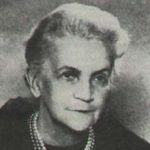
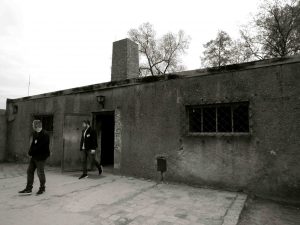 Many people have tattoos these days, and the shops that perform their arts for people, have to comply with strict and sanitary working conditions. A tattoo performed in unsanitary conditions can become infected, and cause the loss of limb or even life, if it is not caught in time. The artwork these days is intricate and very elaborate. People can customize their tattoo so as to reflect their own personality. These days a tattoo is something lots of people use to express themselves, but tattoos were not always considered a thing of beauty, and was often forced upon people. Never was this more forced than during the Holocaust against the Jews.
Many people have tattoos these days, and the shops that perform their arts for people, have to comply with strict and sanitary working conditions. A tattoo performed in unsanitary conditions can become infected, and cause the loss of limb or even life, if it is not caught in time. The artwork these days is intricate and very elaborate. People can customize their tattoo so as to reflect their own personality. These days a tattoo is something lots of people use to express themselves, but tattoos were not always considered a thing of beauty, and was often forced upon people. Never was this more forced than during the Holocaust against the Jews.
Maria Ossowski was a Polish member of the Resistance imprisoned in Auschwitz in 1943. So many people did not survive, but those who did have lived to tell the truth about the Final Solution…Hitler’s most evil plot and crimes against humanity. Ossowski later recalled the horrible first few minutes of captivity and the tattooing process in the camp. Those people who did not die on the trains, or who were not herded straight to the gas chambers were herded into what they were told was their washroom. Ossowski says, “It was a huge barrack, with the water running, cold water I must add, from the top, there were men in already prison garb, which we never seen before. We were made to strip, we were made to go in front – each one of us – in front of that man, that man or the other one, they were all standing in the line, and we were shaven – we were shaven – our heads were shaven, our private parts were shaven and we were pushed then under that water. And after a while we were pushed out of it into another part of that big block, where the huge amount of terrible-looking – and already smelling terrible – clothes were prepared for us.”
Then they were given one dress with three-quarter sleeves that was put on over their heads. Once they were dressed, they were herded into another part, where female prisoners were sitting by little tables. Each had a job to do. They were to tattoo numbers on each prisoner’s arm. The tattoo process was not done in sanitary conditions, but it was done with an instrument that basically “wrote” the number into their arm. The instrument cut the skin and pushed ink under the skin. Ballpoint pens were not invented then, but the tool used acted in a 
 similar way. The process continued until the point and ink formed the shape of a number. Originally a sharp stamp was used, but it was impractical, and so they used the needle and ink method. Those who did receive a tattoo on arrival at Auschwitz might actually be considered “lucky” in that only those deemed fit for work were tattooed. The others were sent off for immediate execution. I doubt anyone who carried this forced tattoo considered it lucky.
similar way. The process continued until the point and ink formed the shape of a number. Originally a sharp stamp was used, but it was impractical, and so they used the needle and ink method. Those who did receive a tattoo on arrival at Auschwitz might actually be considered “lucky” in that only those deemed fit for work were tattooed. The others were sent off for immediate execution. I doubt anyone who carried this forced tattoo considered it lucky.

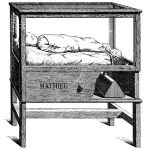 Anyone who has ever been the parent of a premature baby, knows the importance of the incubator. In the mid-1800s and before, a baby born prematurely had almost no chance of survival. Most doctors could only offer comfort care for the infant until death came. All that came to a slow change when a man named Martin Arthur Couney, who was born Michael Cohen in 1869, a Polish advocate and pioneer of neonatal technology, invented the incubator. As time went by, Couney became known as the “Incubator Doctor.”
Anyone who has ever been the parent of a premature baby, knows the importance of the incubator. In the mid-1800s and before, a baby born prematurely had almost no chance of survival. Most doctors could only offer comfort care for the infant until death came. All that came to a slow change when a man named Martin Arthur Couney, who was born Michael Cohen in 1869, a Polish advocate and pioneer of neonatal technology, invented the incubator. As time went by, Couney became known as the “Incubator Doctor.”
While the incubator is an amazing scientific invention, its origins were a little less than what would normally be considered scientific. Prior to Couney’s invention, it was widely believed that premature babies were weaklings, who were unfit to survive into adulthood. It reminds me of what people used to say about orphans. Couney became one of the first advocates for premature babies. Couney allegedly apprenticed under Dr Pierre-Constant Budin, an established French obstetrician in the 1890s, but there is no proof that he ever became a doctor.
Doctor or not…scientist or not, Couney had a knack for inventing…at least in this instance. He called his invention “The Infantorium” and set about trying to get a doctor to use it, but they would not. Left with no choice, Couney decided to take his invention on the road. Basically, he turned it into an amusement park sideshow, where he gave it the famous name. His plan was to charge visitors 25¢ to view premature babies displayed in the incubators. Now, you might think this whole idea is completely insane, and wonder what doctor…much less parent would give consent for such a crazy idea. I did too. Well, we are both wrong in thinking no one would go along with this. Parents agreed, because their child was considered a lost cause anyway. They were also told that the care given to their children would be free, and if the child survived, they got their baby back. I’m sure is was the hardest decision they ever made, but they felt they had no choice.
Couney is best-known for his Infantorium at Coney Island, New York, although he traveled all around the world before coming to America. The “show” consisted of nurses caring for the children as people watched the process. During Couney’s active years at fairgrounds across America, he and his Infantoriums have become widely accredited with saving the lives of over 6,500 premature babies. Couney is additionally recognized as one of the first pioneers of neonatological technology. He was so well known that people sought him out. “One day, an on-edge young man with the hatbox wanted to see Dr. Couney on a personal matter, he said. The doctor assumed he had something to sell and sent him away. The man took his hatbox and left to spend hours wandering amid the dancing elephants, scenic railways, and carnival din of Coney Island. At last he reappeared; could Dr. Couney see him now? This time Couney said yes. The man opened the hatbox. Inside was a premature baby, tiny and red and struggling for breath.”
Dr Martin A Couney knew what to do. In fact, he knew more about “preemies” than anyone else in the United 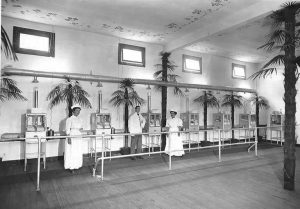
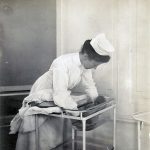 States. He was the first American to offer specialized treatment for them and could boast, toward the end of his career, that out of 8,000 in his care, 6,500 survived. “I can’t save all the babies,” he said, “but the percentage of loss is not large, and every parent knows I took good care of his baby until God took its soul. I never had a complaint or an investigation.” He was truly a great man. Martin Couney died on March 1, 1950. As a side note, Coney Island, in New York City was named after this amazing man.
States. He was the first American to offer specialized treatment for them and could boast, toward the end of his career, that out of 8,000 in his care, 6,500 survived. “I can’t save all the babies,” he said, “but the percentage of loss is not large, and every parent knows I took good care of his baby until God took its soul. I never had a complaint or an investigation.” He was truly a great man. Martin Couney died on March 1, 1950. As a side note, Coney Island, in New York City was named after this amazing man.
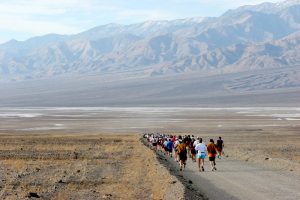 Some people like hot weather and some people like cold weather, which is probably a good thing, or we would all live in one area, and the overcrowding would be horrible. I personally prefer Spring and Summer, mostly Summer, but even I have to admit that I probably couldn’t do Summer very well without air conditioning. That said, I don’t think I could stand living in Death Valley or much of the surrounding area. Death Valley is the hottest place in the world. It is also the lowest and driest place in United States, and because of that conditions there can get pretty extreme. On July 10, 1913, the thermometers at the Furnace Creek Weather Station recorded its temperature to be 134 degrees which is the highest ever recorded temperature. I can’t even begin to imagine how awful that must be, and yet there are people who run in races in Death Valley.
Some people like hot weather and some people like cold weather, which is probably a good thing, or we would all live in one area, and the overcrowding would be horrible. I personally prefer Spring and Summer, mostly Summer, but even I have to admit that I probably couldn’t do Summer very well without air conditioning. That said, I don’t think I could stand living in Death Valley or much of the surrounding area. Death Valley is the hottest place in the world. It is also the lowest and driest place in United States, and because of that conditions there can get pretty extreme. On July 10, 1913, the thermometers at the Furnace Creek Weather Station recorded its temperature to be 134 degrees which is the highest ever recorded temperature. I can’t even begin to imagine how awful that must be, and yet there are people who run in races in Death Valley.
Death Valley has over 1,000 miles of road for running! That might seem interesting, but the weather in Death Valley can be a very interesting. It would be an extreme place to take a run! The trails aren’t always well maintained, giving the park endless cross country opportunities for rocky runs. Many people stick to the roads. Even then, the heat can be very hard on the shoes. Death Valley, California, residents say the are used to the 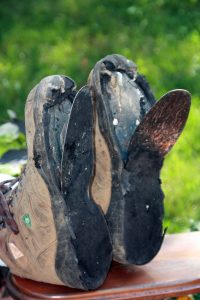 heat, but they know it’s bad when their running shoes start to melt. Now, you just think about that. You are on a run, 10 miles from home, and your shoes start to melt. What do you suppose is going on with your feet?
heat, but they know it’s bad when their running shoes start to melt. Now, you just think about that. You are on a run, 10 miles from home, and your shoes start to melt. What do you suppose is going on with your feet?
Still, as hot as it is in the valley, the towering peaks around the valley have snow on them. Elevation makes a big difference. In fact, as extremes go, there is a remote corner of Death Valley National park, cradled in between the Cottonwood and Last Chance mountain ranges, that sports an intriguing natural history mystery, Racetrack Playa. Here, slabs of dolomite and syenite, ranging in size from a couple of pounds up to 1,000 pounds, leave visible tracks as they slide across the playa surface, without any sign of human or animal intervention. It is a phenomenon that for decades visitors and scientists alike have puzzled over. How could large rocks slide across the sand without help? People thought maybe it was rain water, but that proved wrong. The situation has remained a mystery for many years, because no one ever “caught” the stones moving. Recently, photographic and scientific evidence revealed the truth.
In 2011, Richard D Norris and James M Norris, in conjunction with the Scripps Institution of Oceanography, launched the “Slithering Stones Research Initiative.” They got permission from the National Park, to install a weather station and placed fifteen stones on the southern end of the playa equipped with GPS devices to record movement and velocity. Most of the natural sailing stones begin their strange journeys across the playa at this point, tumbling onto the hard, flat surface from a nearby cliff. Finally, in December of 2013, Richard and James stumbled into a rare confluence of events that allowed them to not only witness the stones moving, but to photograph it. So, what causes it. According to Richard and James, “First you need rain to turn the playa back into a shallow lake, followed by a cold that will freeze a layer of ice over the playa before it evaporates. Then  you need a sunny day and a light wind. The wind and sun work together to crack the ice into sheets hundreds of feet wide and as thin as 1/4-inch, which then blow against the rocks. The ice then acts as sails, sliding the rocks along the slippery mud in a direction determined by the wind. This process is very slow, the stones rarely moving faster than a few inches per-second, which makes the motion easy to over-look without a fixed point to compare them to.” I’m not as amazed that a layer of ice is involved, but rather that a place that is known as the hottest place on earth, can suddenly have rocks that slide across the desert on ice. The conditions had to be perfect. Too much water, wind, or heat, would make it impossible.
you need a sunny day and a light wind. The wind and sun work together to crack the ice into sheets hundreds of feet wide and as thin as 1/4-inch, which then blow against the rocks. The ice then acts as sails, sliding the rocks along the slippery mud in a direction determined by the wind. This process is very slow, the stones rarely moving faster than a few inches per-second, which makes the motion easy to over-look without a fixed point to compare them to.” I’m not as amazed that a layer of ice is involved, but rather that a place that is known as the hottest place on earth, can suddenly have rocks that slide across the desert on ice. The conditions had to be perfect. Too much water, wind, or heat, would make it impossible.
 Storms and high winds are not unusual in the Swiss Alps, and flying over any mountain can find a flight crew in hot water. Over the Swiss Alps, on November 18, 1946, the crew of the C-53 Skytrooper with serial 42-68846 that had taken off from Tulln Air Base near Vienna, Austria, was bound for Pisa in Northern Italy, when they encountered problems. The flight took them over Innsbruck in the Western Austrian Alps. While flying over the Canton of Bern, Switzerland, the weather had unknowingly caused them to lose their bearings. Their actual flight path was taking them deeper South, into the Alps of Central Switzerland.
Storms and high winds are not unusual in the Swiss Alps, and flying over any mountain can find a flight crew in hot water. Over the Swiss Alps, on November 18, 1946, the crew of the C-53 Skytrooper with serial 42-68846 that had taken off from Tulln Air Base near Vienna, Austria, was bound for Pisa in Northern Italy, when they encountered problems. The flight took them over Innsbruck in the Western Austrian Alps. While flying over the Canton of Bern, Switzerland, the weather had unknowingly caused them to lose their bearings. Their actual flight path was taking them deeper South, into the Alps of Central Switzerland.
As often occurs in high mountains, the aircraft encountered a violent downdraft, known as a katabatic wind at a speed of 170 miles per hour. The katabatic wind is comparable to a microburst that basically pushes even big jets into the ground on approach flights. The downdraft caused the aircraft to lose height rapidly in poor visibility conditions. There was no time to recover, and at 2:45pm, the plane hit terrain and crash-landed into the Gauli Glacier at an altitude of 10,990 feet. They had gone down just about 8 miles south of the Swiss Air Force Base Meiringen.
The crash had the potential of being a deadly situation. Crashing a plane into terrain…especially at a high altitude is not usually survivable, but this was a God Gift. The crash occurred on snow-covered near-flat terrain with a slightly sloping hill. For the passengers and crew in the aircraft to step out alive…that was the God Gift. Very few people have crashed into terrain and lived tell the story afterwards! The crew was able to send a distress call from the stricken plane that was picked up in Paris and Lyon, but they erroneously presumed that the crash had occurred in the French Alps. Two days later, an officer based in the control tower of the Meiringen airbase, received a message on his frequency as well and gave the alert of a new radio bearing, narrowing the search area to the Gauli Glacier. That’s two days in freezing November nights at 10,990 feet, with only the fuselage to protect them from the elements. There were two sightings during breaks in the clouds, and finally a rescue team made their way up to bring the crew and passengers down. Twelve people survived the crash and lived to tell about it.
After the rescue, the plane sat there in the glacier until the summer of 1947, when the dismantling of the 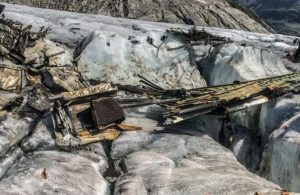 aircraft started. The most precious parts like engines, and (cockpit) interior were airlifted from the scene. The bend propellers were left behind and the partially empty but intact airframe was left behind on the Glacier, where the ice would slowly grind it to pieces. In 2012, pieces of the C-53 began to appear as the glacier melted in the sunlight. Amazingly, there were no traces of corrosion. While the ice has made its mark on the plane’s structure, rendering it to a state that only remotely resembles the plane, it is still there. It now looks like the plane was torn apart in the crash. Of course, we know that was not the case at all.
aircraft started. The most precious parts like engines, and (cockpit) interior were airlifted from the scene. The bend propellers were left behind and the partially empty but intact airframe was left behind on the Glacier, where the ice would slowly grind it to pieces. In 2012, pieces of the C-53 began to appear as the glacier melted in the sunlight. Amazingly, there were no traces of corrosion. While the ice has made its mark on the plane’s structure, rendering it to a state that only remotely resembles the plane, it is still there. It now looks like the plane was torn apart in the crash. Of course, we know that was not the case at all.

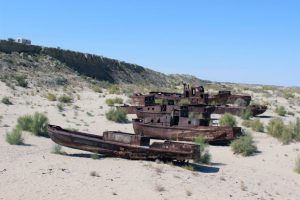 If you were to travel to Kazakhstan and Uzbekistan, you would see what was once the fourth largest inland body of water in the world. The Aral Sea once had a water surface of 26,254 square miles. The salinity measured at 10g/L (grams of salt per liter of water). In comparison, the oceans are about 35 g/L, and the Dead Sea about 300 g/L. The Aral Sea has no outflow, and is fed by the Amu Darya and Syr Darya (Darya means river). It’s this lack of outflow that explains the high salinity. Still, it is much lass salty than the ocean, and especially much less than the Dead Sea.
If you were to travel to Kazakhstan and Uzbekistan, you would see what was once the fourth largest inland body of water in the world. The Aral Sea once had a water surface of 26,254 square miles. The salinity measured at 10g/L (grams of salt per liter of water). In comparison, the oceans are about 35 g/L, and the Dead Sea about 300 g/L. The Aral Sea has no outflow, and is fed by the Amu Darya and Syr Darya (Darya means river). It’s this lack of outflow that explains the high salinity. Still, it is much lass salty than the ocean, and especially much less than the Dead Sea.
The thing is…the Aral Sea was shrinking. By 1998, it had shrunk to just over 10,810 square miles. At that point, it became only the eighth largest lake in the world, and the salinity had increased to 45 g/L. By 2007, the lake had diminished to only 6,625 square miles, and became two separate basins…The North Aral Sea and the South Aral Sea. Now it is not even in the top ten list of the world’s largest lakes. The South Aral Sea is now further divided into two separate basins, east and west. Salinity in the southern basins is up to over 100 g/L, and has resulted in the death of most of the native flora and fauna of the lake. The lake used to have a fishing industry that supplied Russian markets with almost a quarter of their fish, while employing 40,000 people…but no more. Even the climate in the region has changed, with the loss of so much water, becoming more arid, with significantly decreased precipitation further adding to the decline of the Aral Sea. In total, the surface area has declined 90%, and the volume has decreased by 85%…basically like removing lakes the size of Lake Erie and Lake Ontario combined.
While these facts are strange in and of themselves, I wonder exactly how fast this transformation actually occurred. It is said that the sea level has dropped by over 98 feet in many places, leaving fishing boats stranded more than 60 miles from any shore. The ships were simply high and dry in the middle of the sea that had once been the source of income for their crews. The bottom of the lake became a new desert. The towns that had once been thriving were perched on vanished shorelines with toxic dust storms swirling around in the 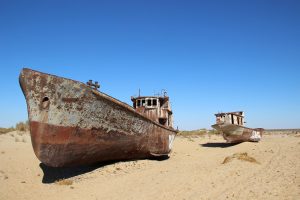
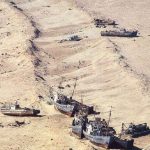 wind. The people struggle in poverty and high rates of cancer, tuberculosis, digestive disorders, and anemia. The area today seems relatively safe to visit today, at least in the short term. What is interesting about the Aral Sea today is the it is still full of scores of ships…all high and dry on the sand. Why didn’t the owners take their ships away before the sea went dry? I guess maybe they believed the rains would come, and maybe they will, eventually. Unfortunately, it will simply be too late.
wind. The people struggle in poverty and high rates of cancer, tuberculosis, digestive disorders, and anemia. The area today seems relatively safe to visit today, at least in the short term. What is interesting about the Aral Sea today is the it is still full of scores of ships…all high and dry on the sand. Why didn’t the owners take their ships away before the sea went dry? I guess maybe they believed the rains would come, and maybe they will, eventually. Unfortunately, it will simply be too late.
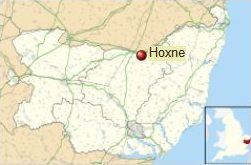 I don’t know about you, but when I go looking for something I’ve lost, usually because I put it in a place that I would know where to find it, I always seem to find several other “treasures” I had forgotten I had. I can’t tell you how many times that has happened to me, even if I had been intently looking for the “treasure” that I finally find when I’m no longer looking for it. That happens to a lot of people, but it’s not likely that the “treasures” we find, are worth anywhere near the value of the treasure that was found by Eric Lawes, when on November 16, 1992, he set off for a field in Hoxne village, Suffolk. He wasn’t even heading out on a treasure hunt. He was searching for his lost hammer!!
I don’t know about you, but when I go looking for something I’ve lost, usually because I put it in a place that I would know where to find it, I always seem to find several other “treasures” I had forgotten I had. I can’t tell you how many times that has happened to me, even if I had been intently looking for the “treasure” that I finally find when I’m no longer looking for it. That happens to a lot of people, but it’s not likely that the “treasures” we find, are worth anywhere near the value of the treasure that was found by Eric Lawes, when on November 16, 1992, he set off for a field in Hoxne village, Suffolk. He wasn’t even heading out on a treasure hunt. He was searching for his lost hammer!!
At his recent retirement, Lawes had received a metal detector as a gift. So Lawes set off to find a hammer he had lost on the farmland. The detector picked up a strong signal in the earth, leading Lawes to start digging. Well…this was not his hammer. After bringing up only a few shovelfuls of silver spoons and gold coins, Lawes quickly retreated and called the police and the local archaeological society. The very next day, as quietly as possible, so as not to create a stir, the archaeologists excavated a chunk of earth with the treasure still contained within. They wanted to remove the objects under strict laboratory conditions, which would help determine the age and storage method of the cache. By the time everything had been removed from the dirt, the archaeologists had nearly 60 pounds of gold and silver objects, including 15,234 Roman coins, dozens of silver spoons, and 200 gold objects. The treasure, which later became labeled as the Hoxne Hoard, was an amazing discovery. Archaeologist Judith Plouviez was extremely excited about the discovery, saying that it was “an incredibly exciting and amazing find.” What’s more, another archaeologist, Rachel Wilkinson, told Smithsonian Magazine that this discovery was “the largest and latest ever found in Britain.”
Normal radiocarbon dating as a means of identifying the age of ancient relics didn’t work in this case. They just couldn’t locate any suitable material for radiocarbon dating from the haul. In the end, they determined the age 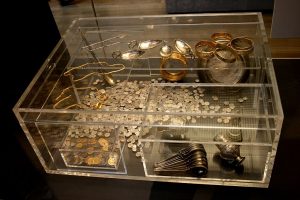 by examining writing on the coins, as well as the ruler carved into them. It was estimated that the treasure was probably buried in either 408 or 409 AD. How it had remained hidden all those years is beyond me…especially on a farm, where the field might have been plowed at any time. All in all, the discovery was a real treasure for archaeologists. Lawes didn’t lose out on the deal either. According to Smithsonian Magazine, in recognition of his discovery and willingness to contact authorities, the British government rewarded him with over £1.7 million (2,249,100 in US Dollars), an amount which he shared with the farmer whose land was dug out in order to get the treasure. Oh, and by the way, Lawes also found his lost hammer…which now also resides in the British Museum too.
by examining writing on the coins, as well as the ruler carved into them. It was estimated that the treasure was probably buried in either 408 or 409 AD. How it had remained hidden all those years is beyond me…especially on a farm, where the field might have been plowed at any time. All in all, the discovery was a real treasure for archaeologists. Lawes didn’t lose out on the deal either. According to Smithsonian Magazine, in recognition of his discovery and willingness to contact authorities, the British government rewarded him with over £1.7 million (2,249,100 in US Dollars), an amount which he shared with the farmer whose land was dug out in order to get the treasure. Oh, and by the way, Lawes also found his lost hammer…which now also resides in the British Museum too.
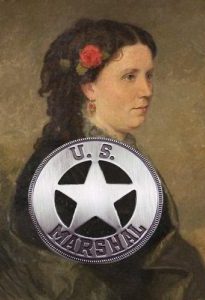 In the days of the Old West, women were considered the “weaker sex” and they were supposed to be cared for and protected by their male counterparts. Most women were fine with that idea, but there were a few, like Annie Oakley and Susan Anderson, who broke the mold. Annie Oakley was an amazing markswoman and Susan Anderson was a doctor. These women weren’t alone in their desire to leave their mark on the world.
In the days of the Old West, women were considered the “weaker sex” and they were supposed to be cared for and protected by their male counterparts. Most women were fine with that idea, but there were a few, like Annie Oakley and Susan Anderson, who broke the mold. Annie Oakley was an amazing markswoman and Susan Anderson was a doctor. These women weren’t alone in their desire to leave their mark on the world.
The world of law enforcement, especially in those days was clearly a man’s world, but in 1891, a woman named F M Miller was commissioned out of the federal court at Paris, Texas as the only female deputy that worked the Indian Territory. Miller was known as a fearless and efficient officer, who had locked up more than a few offenders. She was a “young woman of prepossessing appearance, wears a cowboy hat and is always adorned with a pistol belt full of cartridges and a dangerous looking Colt pistol which she knows how to use.” Apparently, hiring a female deputy wasn’t all that unusual, but the women deputies were known as office deputies, basically a secretary.
Oklahoma has set the pace for something more. United States Marshal C H Thompson, of Guthrie appointed two women as deputies for field work. It was almost unheard of. If a woman choose the vocation of professional thief taker in the most civilized portion of the land would be strange enough, but how strange is it when she chooses field duty on the worst territory in the Union. Criminals in Oklahoma and in Indian Territory, the district where these two girls, S M Burche and Mamie Fossett spent their days, were among the most dangerous anywhere. They were accused of murder, rape, robbery, arson, adultery, bribery, and numerous other crimes. These outlaws initially hid out in Indian Territory, because it was without law enforcement, with the exception of the Indian Nations’ police forces, who had no jurisdiction over the many criminals who had taken flight from other states. The outlaws were ruthless and willing to kill to avoid jailtime. More lives were lost among Federal officers in a year than in all the rest of the nation together. So it would seem that these girls possessed exceptional guts and spunk to willingly undertake such duties.
Burche and Fossett were truly spunky and adventurous women. They had no qualms about invading the newly opened Oklahoma territory. They were young, fairly good-looking, well-educated, fearless, and independent…and they were definitely not Marshal Thompson’s secretaries. When they took the oath of office and assumed their duties it was with distinct understanding that they would serve the Government just as would any other deputy marshal. They were to take the field, serve writs and warrants, and make arrests just as any male deputy might be called on to do. And they did it with great success.
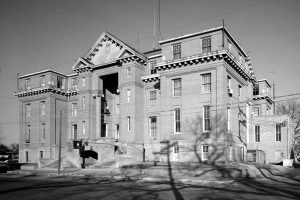
The wildness of the Oklahoma and Indian Territory would soon come to an end when Judge Isaac Parker was appointed to the Western Judicial District of Arkansas, which included Indian Territory. Parker would go on to command about 200 deputy marshals to “clean up” the lawless territory, but that would take years as the deputies struggled to cover the more than 74,000 square miles in their search for hundreds of wanted fugitives. It was not going to be a speedy process. Into this dangerous midst, a number of men made names for themselves. Men such as Heck Thomas, Bass Reeves, Bill Tilghman, Chris Madsen, and dozens of others. More quietly, a few other deputies also made names for themselves. Quietly, because they were women.

 When we think of Paris, the first thing that comes to mind is the Eiffel Tower. If history had been different, those of us alive today would most likely be completely unaware of the historical icon. The Eiffel Tower was built in 1889, and since that time, over 200,000,000 people have visited it, which makes the Eiffel Tower the most visited monument in the world. The Eiffel Tower was erected for the Paris Exposition, and was inaugurated by the Prince of Wales, who went on to become King Edward VII. The tower was the entrance arch to exposition, and was the most visited site during the Exposition. As they were preparing for the Exposition, seven hundred proposals were submitted in a design competition. In the end, it was the radical design of French engineer Alexandre Gustave Eiffel that was unanimously chosen. Eiffel was assisted in the design by two engineers, Maurice Koechlin and Emile Nougier, and architect Stephen Sauvestre.
When we think of Paris, the first thing that comes to mind is the Eiffel Tower. If history had been different, those of us alive today would most likely be completely unaware of the historical icon. The Eiffel Tower was built in 1889, and since that time, over 200,000,000 people have visited it, which makes the Eiffel Tower the most visited monument in the world. The Eiffel Tower was erected for the Paris Exposition, and was inaugurated by the Prince of Wales, who went on to become King Edward VII. The tower was the entrance arch to exposition, and was the most visited site during the Exposition. As they were preparing for the Exposition, seven hundred proposals were submitted in a design competition. In the end, it was the radical design of French engineer Alexandre Gustave Eiffel that was unanimously chosen. Eiffel was assisted in the design by two engineers, Maurice Koechlin and Emile Nougier, and architect Stephen Sauvestre.
Believe it or not, there was some controversy over the winning design. The Paris city government actually received a petition, signed by about 300 people in a effort to prevent the city government from constructing the tower. Some famous personalities like Guy de Maupassant, Emile Zola, and Charles Garnier also signed the petition. They felt that the Eiffel Tower would be useless and monstrous, and it endangered French art and history. Wow!! Today, they would be stunned at the beauty it posses, especially when it is lit up at night.
Of course, the tower was ultimately built and it was given out for a 20-year lease. When the lease expired in 1909, it was planned to tear down the iconic tower. In the end, it was its antenna that saved the tower, as it was used for telegraphy. The tower also played an important role in capturing the infamous spy Mata Hari 
 during World War I. Following these events, the tower gained acceptance among the French. As 1910 arrived, the Eiffel Tower became a part of the International Time Service and the French Radio has been using the tower since 1918. The French Television started using the height of the tower from 1957. I don’t really know if most of us knew about all the other uses for the Eiffel Tower, other than the tourist attraction most of us connect with it.
during World War I. Following these events, the tower gained acceptance among the French. As 1910 arrived, the Eiffel Tower became a part of the International Time Service and the French Radio has been using the tower since 1918. The French Television started using the height of the tower from 1957. I don’t really know if most of us knew about all the other uses for the Eiffel Tower, other than the tourist attraction most of us connect with it.
Today this fantastic structure of iron and rivets is iconic symbol of Paris and people from all over the world come to Paris just to marvel at this man-made wonder. The stunning photographs that have been taken from all angles, and the romantic appeal for so many couples of all ages and nationalities have worked together to make the Eiffel Tower famous.
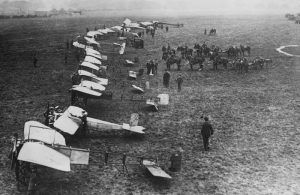 Weapons of warfare have changed over the years, but one of the strangest fighting systems was during World War I, when the planes were not as sophisticated as planes are today. They were slow and at that time, they did not have the guns attached to the planes. Of course they were usually two-seaters, so unlike the World War II planes that had a pilot exclusively assigned to fly the plane, both occupants of the plane had to shoot, or they would be shot down. That was how war was. Kill or be killed.
Weapons of warfare have changed over the years, but one of the strangest fighting systems was during World War I, when the planes were not as sophisticated as planes are today. They were slow and at that time, they did not have the guns attached to the planes. Of course they were usually two-seaters, so unlike the World War II planes that had a pilot exclusively assigned to fly the plane, both occupants of the plane had to shoot, or they would be shot down. That was how war was. Kill or be killed.
The problem of not having guns attached to the plane was really one of control. There was the problem of controlling the plane with shots being fired all around you and no protection in the open cockpit. Then there was controlling the guns in the wind of flight. Not to mention the shots being fired at the open cockpit. The guns the soldiers had on these early planes were carbines and pistols…to take down a war plane…yikes. Of course, there 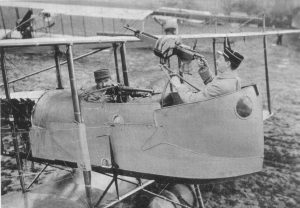 were other problems too. Trying to shoot at the enemy from the cockpit of the plane, the soldier had to be careful not to shoot off the propeller. That would definitely be problematic.
were other problems too. Trying to shoot at the enemy from the cockpit of the plane, the soldier had to be careful not to shoot off the propeller. That would definitely be problematic.
Really, I can’t imagine being a pilot in that war era. You would really be taking your life in your own hands…even more so than the men who flew in later eras, who were also in grave danger, but maybe a little less so. Imagine being the co-pilot in the plane when your pilot is waving his gun around trying to hit the planes flying around you. If the soldier shooting could shoot off the propeller, they could just as easily shoot the other occupant of the plane. I suppose that the pilots fighting in World War I would say that they were just doing their duty, but it seems to me that their “duty” took great courage. Of course, any soldier, no matter what their duty, does their duty, and it always takes great courage. Any soldier 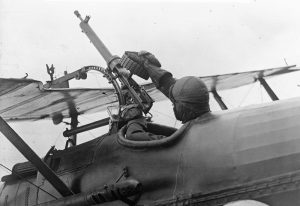 must exhibit great courage in battle. There is no way to go into battle and not be concerned for your safety. And thankfully, as time goes on, weapons of warfare are getting more advanced at being effective, while protecting the soldier in the fight.
must exhibit great courage in battle. There is no way to go into battle and not be concerned for your safety. And thankfully, as time goes on, weapons of warfare are getting more advanced at being effective, while protecting the soldier in the fight.
Of course, those old biplanes had some advantages too. The open cockpit design allowed for easy spying. They could also see the enemy better, and it was easier to drop bombs in those planes, but the later planes made for easier shooting with the attached gun, multiple guns, and the nose guns of the men below the pilots. I’m thankful for the many improvements that have made it easier for our soldiers to come home alive.
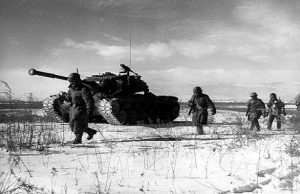 It happened during the Korean War. The First Marine Division was in the middle of heavy fighting in the area of Chosin Mountain Reservoir, and the temperatures were subfreezing. The marines had been fighting long enough to have run out of 60mm mortar ammo. That was not going to make for a successful battle, so the marines called for the 60mm mortar ammo, which had the code name “Tootsie Rolls.” The unfortunate mistake was that the radio operator, didn’t have the code sheets. The radio operator didn’t know what to do, since the request sounded so urgent, so he called in the order.
It happened during the Korean War. The First Marine Division was in the middle of heavy fighting in the area of Chosin Mountain Reservoir, and the temperatures were subfreezing. The marines had been fighting long enough to have run out of 60mm mortar ammo. That was not going to make for a successful battle, so the marines called for the 60mm mortar ammo, which had the code name “Tootsie Rolls.” The unfortunate mistake was that the radio operator, didn’t have the code sheets. The radio operator didn’t know what to do, since the request sounded so urgent, so he called in the order.
Now, just imagine…you are a marine in the middle of a battle, in freezing weather, our of ammo, and headquarters drops in pallet after pallet of Tootsie Rolls!! Well, who can resist Tootsie Rolls…right. So while it wasn’t ammunition, the pallets weren’t the ammunition he really needed, Tootsie Rolls did supply the calories the men needed. They weren’t exactly nutritious, they did give the men energy, which was needed at the time. It is also possible that the Tootsie Rolls helped to keep them warm in the freezing temperatures. They also learned they could use warmed Tootsie Rolls to plug bullet holes, sealing them as they refroze. Interesting idea.
The fighting had been going on for over two weeks. The 15,000 man division suffered 3,000 killed in action, 6,000 wounded and thousands of severe frostbite cases. The battle was a serious matter, but they accomplished their goal and destroyed several Chinese divisions in the process. Many credited their very survival to Tootsie Rolls. Surviving Marines called themselves “The Chosin Few.”
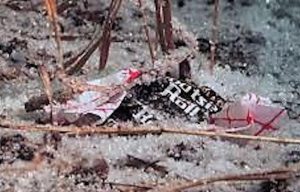
Still, the radio operator had made a serious error, and they couldn’t just let that big an error slide. I can picture it now. The jokes that the poor operator had to face. In fact they probably came up with a Tootsie Roll nickname for him, or maybe they went a different route. He might have been designated a hero for saving them with all those Tootsie Rolls…especially if they sent ammo when the error was brought to light. So, while you might not have known it, Tootsie Rolls hold significance with the Marine Corps. I guess now you know what. Some have even called them the “Tootsie Roll Marines.”

